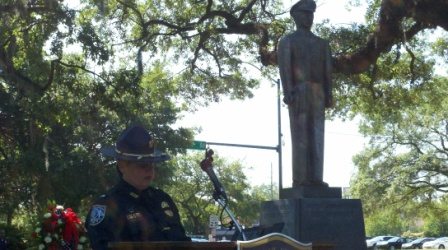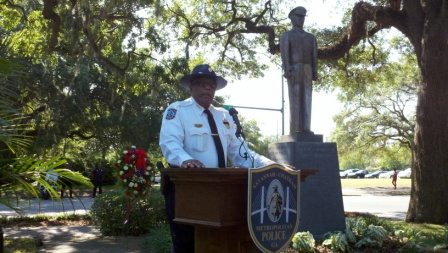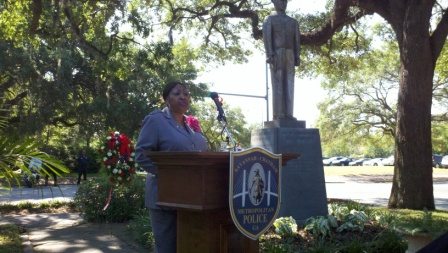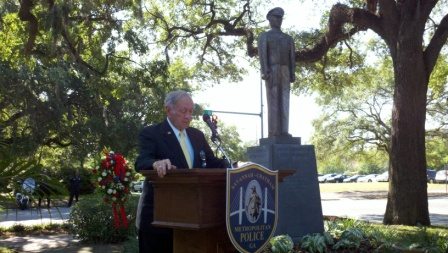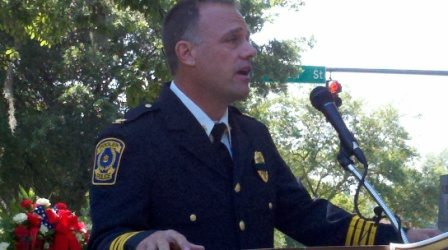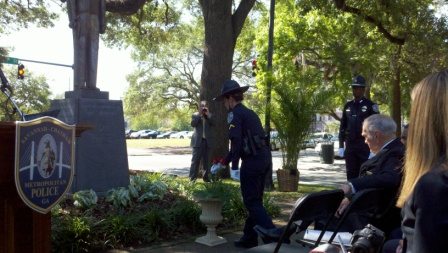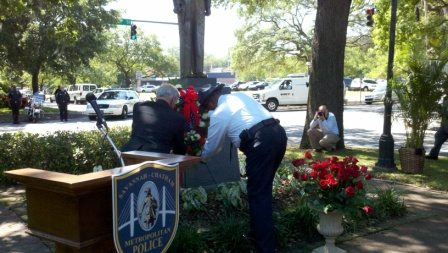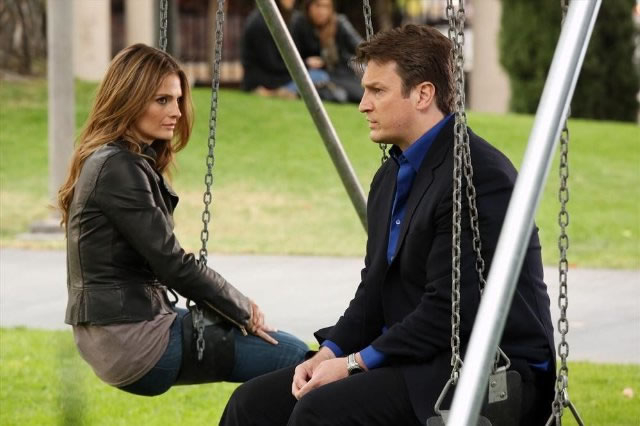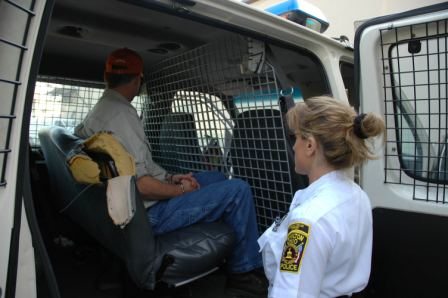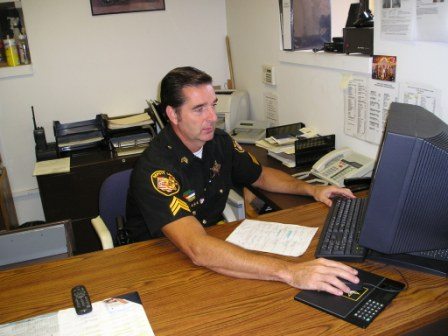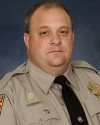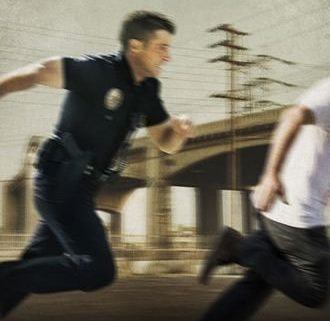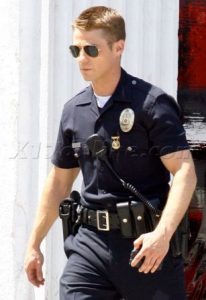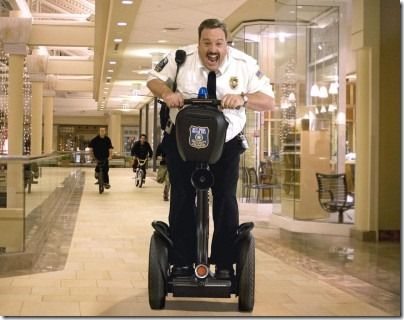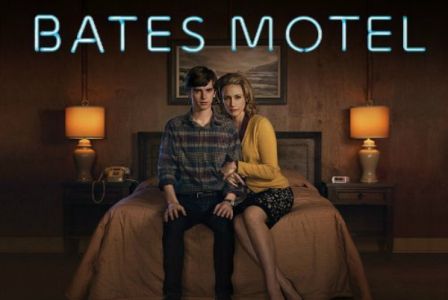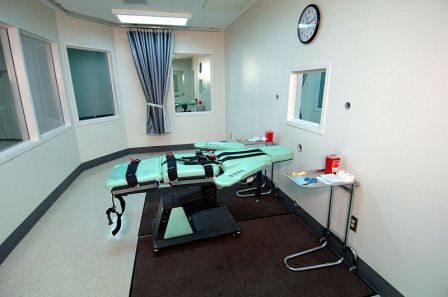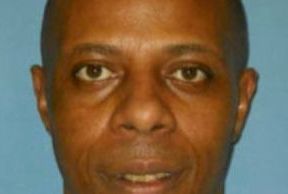So, have all you die-hard shippers come down to earth yet? I ask because when the “swing set” scene played out last night I heard Melanie squealing from my house and we’re several states apart. I’m anxious to hear what she has to say about this episode, since it leaned heavily on the relationship side with less focus on the investigation of the dead body of the week.
It was interesting to see Castle writers take a case straight from the news and weave it into their fictional world. Some of you may remember the story of the young Canadian woman, Elisa Lam, whose decomposing body was found in a rooftop water tank at the Hotel Cecil in L.A.
The discovery of Lam’s body was pretty gruesome. But the horror didn’t stop there, no sir. Hotel guests at the Cecil were sickened and appalled to learn that the water they’d been using to brush their teeth, shower, and drink, was the very water in which the corpse was found floating.
Of course, the scene last night (bloody water coming from the shower head) was preposterous because there’s not enough blood in the human body to color that amount of water any shade of red, especially the deep crimson we saw pouring over the woman in the shower. Still, it was nice to see this storyline instead of some sort of conspiracy that involved Beckett’s mother, Castle’s dad, Montgomery, or Ryan’s ties to the Irish mob complete with a past love interest. So, as gruesome as it was in real life, the story was a refreshing change of pace for Castle.
But, enough of that for now. Let’s turn to Melanie who’s chomping at the bit to talk about the gushy aspect of this episode. Melanie…

Melanie Atkins
I’m still peeling myself off the ceiling after this “Watershed” season finale. If you haven’t watched this episode, leave this page now because my post contains #majorspoilers. That scene at the swings at the end… can you say SQUEE?!
When the show first opens, Kate is given the professional opportunity of a lifetime—a chance at a federal job in DC — but she also loves Rick. She claims not to know where their relationship is going, however, and that worries her. She and Rick haven’t talked about it, or about anything concerning their future. They keep putting off the conversation, probably because they’re both scared. And why wouldn’t they be? Rick has two failed marriages under his belt and isn’t ready to commit; Kate has never dated anyone this long before and isn’t sure about getting in any deeper with Rick than she already is. What’s a girl to do?
What Kate does is lie by omission. She doesn’t tell Rick about the interview in DC or anything about the job at all. Not smart, but not totally unexpected. Kate isn’t one to open up easily, even after Rick supposedly tore down her walls. She likes to keep things close to the vest.
She does, however, accept professional advice from Captain Gates, who turns out to be her biggest cheerleader, and then she goes to see Lanie, who helps her on a more personal level. Well, basically, Kate and Lanie discuss Kate’s relationship with Rick, and we learn that Kate is torn… and scared to death of having “the talk” with Rick about their relationship, whether or not she gets the job.
Then Rick goes to her place for dinner and finds her boarding pass for her trip to DC, and she has to come clean with him. He’s hurt and angry that she lied to him—who wouldn’t have seen that coming?—and that she failed to include him in such a life-changing decision. He feels as if he’s being left behind. How can they stay together if she moves to another city? If she keeps lying to him? And why didn’t she feel as if she could confide him in? They argue, and Rick leaves. I don’t blame him.
At work the next day, Espo and Ryan pick up on the bad vibes when Rick doesn’t come to the precinct. Kate is short with everyone, and they keep their distance. They know Kate and Rick are fighting, but can’t do anything about it.
Rick confides in Martha, his mother, and she gives him some sage advice: “I know you. You do not hold back… except in this thing with Katherine,” she says. And later, “So is it possible that the reason you have held back is that deep down inside, you don’t really think this is gonna work.” I truly believe this is a light bulb moment for Rick. Aha!
Kate is offered the job, for real, and she turns to her dad, Jim Beckett, for advice. Jim says, “Sounds like a great offer. Your mom would be proud. Heck, I’m proud of you.” Then he asks her what she wants to do, and Kate says she believes she’s standing between two possible futures: the job, or Rick. She’s afraid their relationship will fail, and she’ll be left twisting in the wind without him or the job. “We’ve been doing this dance for the past five years, and what happens when the music stops?” she says, and her dad replies, “You know, in your whole life, you’ve never had a relationship go this far.” And, “Look, Katie, I know you. When you get scared, you hide in your work.” So true! Then he says, “I just want you to be sure that whatever decision you make, it’s not because you’re afraid.” Kate tells him she wants the job. That she’s sure.
Then she’s summoned back to the precinct, where she tries to put a slam dunk on what just might turn out to be her last case. She shoves her record in the guy’s face and tells him “this room has been my life… my home. And I will not let you sit here and lie to me in my own home.” I believe that deep inside, she knows she belongs at the 12th. That she really doesn’t want to leave, no matter what she says. Or maybe not. When she leaves the interrogation room, she looks around as if she won’t ever see the place again. At that point, I really didn’t know what she wanted.
The boys stop her and ask what’s going on, and she says she has something to tell them, but that she has to tell someone else first. It’s Rick, of course. Is she going to tell him she’s taking the job, or that she plans to turn it down? We really don’t know.
She calls Rick and tells him they need to talk, and he agrees. They meet at the swings… a pivotal place for them. The summer after she was shot, it’s where they reconnected after the book signing, and then last year, it’s where she went to think after almost falling off the roof and dying before she showed up wet and dripping at his door. I’d seen promo pics and knew this scene had to be a big deal, and after hearing the last scene was missing from the one sent to the screeners (the ones who watched it early so they could review it), I knew it had to be really big.
Boy, did I hit the nail on the head. Kate apologizes, and Rick tells her he wants more. That they both deserve more… and she agrees. Then he says, “Whatever happens, whatever you decide…” He gets up, and then drops to one knee with a ring in his hand. “Katherine Houghton Beckett, will you marry me?”
Did you hear all the squees from the Castle fandom? They’re still echoing in my ears. The hashtag #CastleSeasonFinale had already been trending worldwide (partially because Molly Quinn, who plays Alexis, and Penny Johnson Jerald, who is Gates, were live tweeting), and after the proposal, Twitter really went nuts. People kept most of the spoilers on the down-low, even still, so as not to spoil the west coast feed, and that was nice. Now that everyone’s seen it, however, we can shout it from the rooftops. Rick proposed!!!
Will Kate still take the job? Will she accept his proposal? This is the “gentle” cliffhanger we get to live with over the summer hiatus. I don’t care. I can deal. He proposed!!
Can you squee me now???
When the job offer comes, she doesn’t say yes right away.

Lee Lofland
Before I dive in I’d like to remind everyone, especially the hate-mailers, that we write this review and recap at the request of several writers who wanted to know if the police procedure and investigation (sounds like the title of a good book, huh?) on Castle was an accurate portrayal of the techniques and tactics used by real life experts. We realize the show is fictional and is not intended to be used as a police training film. Really, we understand. We know it is for entertainment purposes. Still, the writers want to know what’s accurate and what’s not so they won’t include any of the “wrong” in their books. So, that why we do what we do.
Okay, let’s start with Lanie.
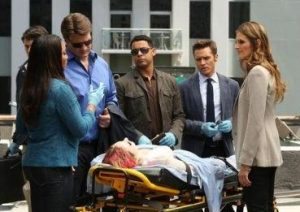
What can I say…she nailed the opening scene. “There’s evidence of blunt force trauma but I won’t know the cause of death until I get her back to the morgue.” Yep, nailed it. No street corner witch-doctory at all.
Actually, the only thing she said that was off the mark was about the time of death. Lanie narrowed it down to between midnight and 1 am. Unless someone saw the murder take place, there’s no way she could have pinpointed the TOD in this case to within a one-hour time frame.
– The “crew” along with a few uniformed officers were seen questioning potential witnesses inside the hotel. This was a good scene as well, because after the crime scene that’s where an investigation normally begins…talking to people.
– Of course, we knew the guy who was so insistent that the victim was not a prostitute was not the killer. But we did know he would soon be involved in pointing Beckett and team on the right path toward the real suspect, or that he’d be a key piece of the puzzle (verifying that the suspect was on her computer most of the time and was not a prostitute).
– Beckett was offered the job in D.C. about four months too soon. No way someone would be hired for a federal law enforcement job that quickly. The background investigation alone would take several weeks, if not months.
– We saw Beckett and entourage ready to kick in the door to Blalock’s apartment. Well, that was all fine and dandy, with the exception that Beckett was standing directly in front of the wooden door. A gunman on the inside could have easily fired through the door (where he’d be expecting a person to stand while knocking). The proper positioning would have been to either side of the door.
– The part about the politician who was driving during the car crash that killed the murder victim’s friend was a hint of another true crime—the 1969 car crash in Chappaquiddick, Ma. with Ted Kennedy and Mary Jo Kopechne. Kennedy’s car landed upside down in a body of water, but he was able to swim back to shore. Kopechne was not and drowned. Her body was recovered the next day. Kennedy did not report the crash until several hours later. He plead guilty to a charge of leaving the scene of an accident and received a two month jail sentence (suspended).
– Beckett interviewed the murder suspect (the brother of the politician) and we saw the man suddenly lower his head. That’s the sign we all look for. When the suspect lowers his head and looks down toward the floor, he’s normally about to confess. Also, Beckett summed it up nicely when she said, “I didn’t need him to confess, I just needed to see his eyes.” Very true. Investigators often can tell when someone is truthful or not by merely watching their eyes. The eyes tell officers if they are on the correct path of questioning. It’s not science, but it’s two steps above the “gut feeling.”
Finally, the proposal surprised me, one of the few times the show wasn’t predictable. So this was a nice touch and a great cliffhanger. Of course, I don’t believe they’ll marry and more than I believe Beckett will go to DC. Besides, Castle wouldn’t be able to tag along on federal investigations. Then again, I didn’t think the IRS would be allowed to target specific groups of people, or that the feds could secretly spy on journalists by obtaining their phone records. Go figure.
You know, maybe we need Castle and Beckett in Washington. The place certainly needs some help. However, the two of them would have a hard time there, I think. After all, isn’t most of what happens there stranger than any fiction the Castle writers could ever hope to dream up? But, losing her gun in Washington wouldn’t be a problem. After all, what’s one more lost gun among the dozens lost during the Fast and Furious operation?
Anyway, see you next season when wedding bells will ring…or not.



